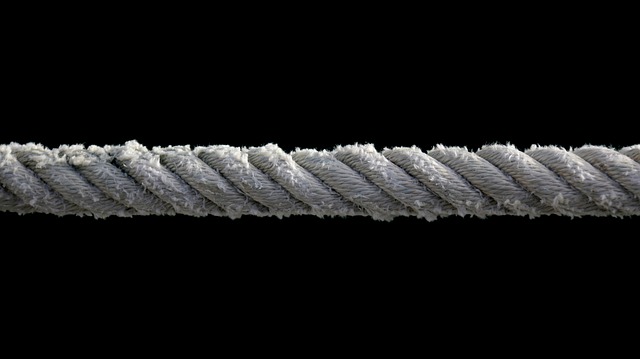A branch of physics deals with mechanics and examines how objects move and the forces affect them. Its explain motion, equilibrium, and dynamics problems which requires the different kinds of forces. The common forces in mechanics that are commonly meet to deals with different kind of forces are mentioned below:
Force – Definition and Concept
An item experiences force when it is pushed or pulled, changing its shape or state of motion. It is a vector quantity that is measured in newtons (N) and has both magnitude and direction. A force’s effects are reliant upon various aspects, like the surface’s type, direction, and point of application.
Types of Common Forces
The forces meet in mechanics can be broadly categorised into contact forces and non-contact forces.
Contact Forces
Contact forces arise due to physical contact between two bodies.
Frictional Force
Its depend on the normal force and the characteristics of the surfaces, friction is a resistive force that opposes the relative motion between two surfaces in contact. It is caused by microscopic imperfections on the surfaces.
There are three different types of friction:
Rolling friction;– which occurs when an object rolls over a surface. Rolling friction has a complex origin, though somewhat different from that of static and kinetic friction. The static and kinetic friction is much greater (even by 2 or 3 orders of magnitudes) that the rolling friction. To reduce friction, we use ball bearing between two moving parts of a machine.
Kinetic friction:- which occurs during motion.
Static friction:- which occurs before motion starts.
Normal Force
The normal force stops items from passing through one another by acting perpendicular to the contact surface.
Example, a table exerts an upward normal force that is equal and opposed to the gravitational force when an object is resting on it.
Tension Force
When forces acting from opposite ends pull a string, rope, or cable taut, tension is the force that is transferred through the material.
It always moves away from the item and along the string’s length.
Applied Force
This is the outside force that starts or modifies motion when someone or something applies it. Example pulling a cart or pushing a box.
Air Resistance
One kind of frictional force that opposes an object’s travel in the air is air resistance, which is important for high-speed objects and is dependent on the object’s surface area, form, and velocity.

Non-Contact Forces
Non-contact forces act without physical contact between objects and are a result of basic interactions.
Gravitational Force
Newton’s law of gravity states that the gravitational force is the attractive force that a huge body like Earth exerts on an other object: F = G m1m2 / r2
where G is the gravitational constant, m1 and m2 are the masses of the objects, and r is the distance between their centers.
Electromagnetic Force
These are forces that result from charged particles interacting with one another. Examples are the magnetic force between a magnet’s poles and the force that attracts or repels electric charges.
Magnetic Force
Moving charges or magnets in a magnetic field encounter this force
Nuclear Forces
Interactions inside atomic nuclei are caused by both strong and weak nuclear forces. Although mechanics does not specifically address these, their suggestion is basic to understand material qualities.
Free-Body Diagrams (FBD)
Free-body diagrams are a vital tool in mechanics.
A vector representing each force is drawn from the application point. FBDs usually incorporate common forces such as friction, tension, normal force, and gravity.

Newton’s Laws and Common Forces
Newton’s three laws of motion are forces interact with objects:
First Law (Law of Inertia): Describes the resistance to changes in motion due to balanced forces.
Second Law: Relates net force to acceleration through the equation: Fnet = ma
Third Law: States that every action has an equal and opposite reaction.
Applications of Common Forces
Equilibrium: When the sum of all forces acting on a body is zero, the body is said to be in equilibrium.
Motion: Forces cause acceleration or deceleration, as described by Newton’s second law.
Work and Energy: Forces perform work, which translates into changes in the energy of the system.
Tension in a String
Feature of an ideal string
(i) Massless (ii) Perfectly smooth (iii) In-extensible
When the two ends of string are pulled in opposite directions then a force develops in the string called tension.
Rules for making tension
Tension in a string is always along the string and away from the object.
In an ideal string tension at all points of the string will be same.
In a string or a chain tension is only extensional.
In a rod, tension can be extensional or compressional.

Note:-
Common forces in mechanics is the ideas of contact and non-contact forces and how they are used can evaluate motion and equilibrium scenarios in the real world with ease.
In mechanics, forces are broadly categorized into:
1.Contact Forces – Forces that arise from physical contact, such as friction, tension, normal force, and applied force.
2. Non-Contact Forces – Forces that act without physical contact, such as gravitational, electromagnetic, and nuclear forces.
Frictional Force: A resistive force that opposes the relative motion between two surfaces in contact. It acts parallel to the surface.
Normal Force: A supportive force exerted by a surface, acting perpendicular to it, to prevent an object from penetrating the surface.
Gravitational force is calculated using Newton’s law of gravitation:
F = Gm1m2 / r2
where:
F: Gravitational force
G: Gravitational constant
m1,m2: Masses of the objects
r: Distance between the centers of the two objects
Tension is the force transmitted through a string, rope, or cable when it is pulled tight. It acts along the length of the string and is responsible for maintaining equilibrium or motion in systems like pulleys and hanging objects.
Air resistance, a type of frictional force, becomes significant when objects move at high speeds or have large surface areas. It opposes motion and affects trajectories, as seen in parachutes or high-speed vehicles.
A free-body diagram simplifies the analysis of forces acting on an object by visually representing each force as a vector. It helps in understanding the net force, equilibrium, and acceleration of the object.
First Law: Explains how forces maintain or change the state of motion (e.g., balanced forces result in no acceleration).
Second Law: Describes how the net force acting on an object causes acceleration (F = ma).
Third Law: States that forces come in action-reaction pairs (e.g., normal force and weight).